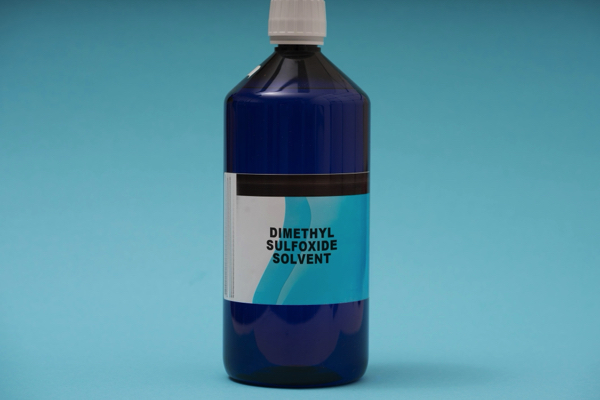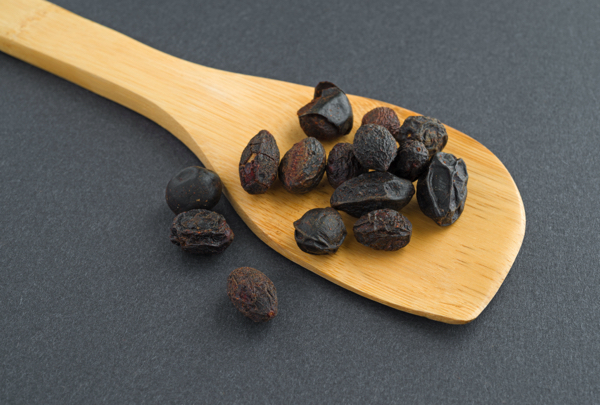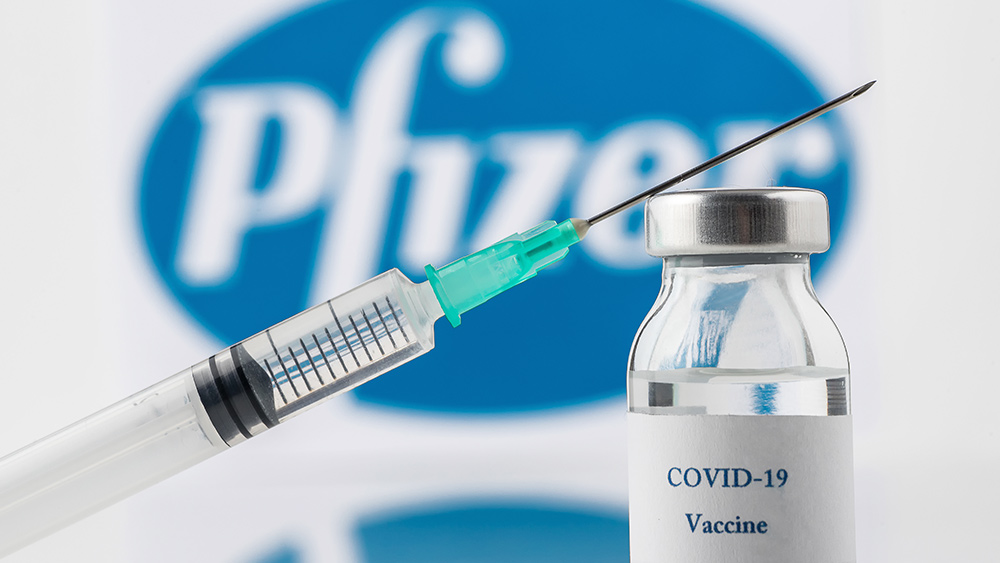Healing with DMSO: An effective alternative medicine for pain, inflammation and chronic illness
05/14/2025 / By Olivia Cook

- DMSO is a natural, affordable healing agent derived from tree pulp with powerful pain-relieving, anti-inflammatory and tissue-healing effects.
- It works transdermally, meaning it can carry other helpful substances deep inside the body, making it especially useful for chronic pain, injury recovery and inflammation.
- Topical application is safe and effective, especially when diluted properly (40 to 70 percent) and applied to clean skin using natural materials like cotton and glass.
- Common uses include arthritis, burns, dental pain and headaches, with benefits extending to detoxification and immune support.
- Though largely ignored by mainstream medicine, DMSO remains a safe, science-backed option for people looking to take charge of their health without relying on expensive treatments or pharmaceuticals.
For decades, a clear, garlic-scented liquid called DMSO (dimethyl sulfoxide) has quietly been helping people relieve pain, heal injuries and recover from chronic inflammation – often without a prescription or a hefty price tag.
Once hailed by medical researchers as a breakthrough in medicine, DMSO has since slipped into the shadows of mainstream healthcare. Why? It’s cheap, naturally derived and unpatentable – making it financially unattractive to Big Pharma. But for health-conscious individuals looking for affordable, effective, safe at-home remedies, it may be one of the best-kept secrets for maintaining wellness.
In the book “Healing with DMSO,” holistic practitioner Amandha Dawn Voller pulls back the curtain on DMSO – one of the most underrated natural therapies of our time. It’s a misunderstood tree-derived compound with untapped potential for pain relief, healing and more.
Voller offers readers decades’ worth of science, safety tips and practical guidance for using DMSO at home. This isn’t just a book for DIY health explorers, alternative medicine users, natural health seekers or health enthusiasts – it’s for regular people suffering from arthritis, back pain, neck pain or stubborn skin conditions who want real relief without a cabinet full of pills.
DMSO is a byproduct of the paper-making process, derived from tree pulp. But don’t let that fool you – it’s been studied for over 100,000 scientific articles for its extraordinary healing powers. First used to preserve organ transplants, DMSO earned early fame in sports medicine because of its ability to reduce pain and inflammation in minutes.
It is not a drug in the commercial sense. It’s more like a molecular taxi, able to carry helpful compounds, like herbal extracts, minerals, vitamins and more, deep into your tissues – and even across the blood-brain barrier. That makes it a powerful ally for people struggling with chronic disease, pain or swelling.
Unlike over-the-counter anti-inflammatories that just mask symptoms, DMSO helps the body heal itself. clearing out cellular waste, calming the immune system and delivering nutrients where they are needed most.
What can it help with?
In the book, Voller outlines a long list of DMSO’s potential uses, backed by both research and real-world results:
- Autoimmune pain and swelling (e.g., lupus, rheumatoid arthritis): DMSO reduces inflammation without suppressing immunity. Vollmer advises consistent topical application of DMSO (60 to 80 percent), alongside detox, nutrition and lifestyle support.
- Carpal tunnel syndrome: Apply a 50 percent DMSO solution to the wrist two to three times daily. Combining it with vitamin B6 or B12 (topically or internally) can enhance nerve healing and reduce compression symptoms.
- Fibromyalgia: Start with very low doses of DMSO (10 to 15 percent topically), such as Vollmer’s Peace Cream. Apply two to three times daily and gradually increase if tolerated. Relief may include reduced pain and better energy due to detoxification and oxygenation.
- Heavy metal detoxification: DMSO binds to metals like cadmium, lead and mercury, promoting elimination via sweat or urine. It is typically used with magnesium and glutathione in moderate doses, especially if the liver and kidneys are healthy.
- Improved circulation and stroke recovery: DMSO improves blood flow by reducing blood viscosity and dilating blood vessels. Vollmer notes its emergency use in ischemic strokes, where it may help restore oxygen supply. High doses are only for clinical or emergency settings.
- Infections resistant to antibiotics: DMSO can re-sensitize resistant bacteria when combined with certain antibiotics. Vollmer stresses this use is experimental and best reserved for supervised settings.
- Interstitial cystitis and bladder pain: This is the only FDA-approved use for DMSO in humans. In the form of Rimso-50, DMSO is instilled directly into the bladder under medical care to reduce pain and inflammation in the urinary tract lining.
- Migraines and headaches: Use a 50 percent DMSO solution applied to the temples, forehead, back of the neck and over the liver area. Vollmer notes that detox support via the liver enhances symptom relief. It can be used hourly up to three times, along with internal hydration.
- Muscle aches, joint pain and inflammation: Apply a 40 to 70 percent diluted DMSO solution topically to affected areas. Relief often comes within minutes due to its anti-inflammatory and analgesic (pain-blocking) effects.
- Osteoarthritis and bursitis: Use a 70 to 80 percent DMSO solution, applied two to three times daily over affected joints. Vollmer often pairs it with magnesium oil, MSM and vitamins D and K2 to support cartilage and reduce inflammation.
- Radiation damage and DNA repair: Apply DMSO topically or take internally (only under medical guidance) before or after radiation exposure. Vollmer’s protocol for minor exposures (e.g., CT scan, X-ray) is to drink one teaspoon of DMSO diluted in juice or distilled water daily for seven days.
- Shingles and nerve pain (post-herpetic neuralgia, trigeminal neuralgia): DMSO’s nerve-calming and anti-inflammatory properties help relieve these. Start with a low-percentage topical application of DMSO (40 to 60 percent) to avoid irritation. Use cautiously during active outbreaks, as detox can trigger healing reactions.
- Skin conditions (acne, contact dermatitis and eczema): Use 40 to 60 percent topical DMSO, possibly blended with aloe or essential oils. Helps by reducing inflammation and aiding skin regeneration without steroid use.
- Tooth and gum infections: Dilute DMSO in distilled water (usually 50 percent or less) and swish around your mouth or apply directly with a cotton swab. It helps reduce bacterial growth, inflammation and pain.
- Wounds and burns: For acute injuries, apply 50 percent DMSO blended with aloe vera gel or colloidal silver. It reduces swelling and pain and speeds up tissue repair. For deeper or second-degree burns, reapply every eight hours for two to three days.
DMSO has also shown promise in addressing brain injury, eye issues (like cataracts), scar tissue breakdown and even early stage cancers, particularly when combined with other natural agents like vitamin C or frankincense oil.
Its wide range of uses is what makes DMSO so compelling – and so controversial. It’s not just treating symptoms; it’s working on the cellular level to support the body’s own healing processes.
Watch the following video to learn more about DMSO concentrations in Amandha Voller’s “Healing with DMSO.“
This video is from the Daily Videos channel on Brighteon.com.
More related stories:
DMSO: A new era in pain management.
DMSO: A common lab chemical with ANTICANCER potential.
DMSO: A game-changer in the treatment of infectious diseases.
Sources include:
Submit a correction >>
Tagged Under:
alternative medicine, Amandha Vollmer, Cures, detox support, dimethyl sulfoxide, DMSO, health science, holistic wellness, inflammation, natural cures, natural healing, natural health, natural medicine, Naturopathy, pain relief, remedies, tips, transdermal therapy
This article may contain statements that reflect the opinion of the author





















